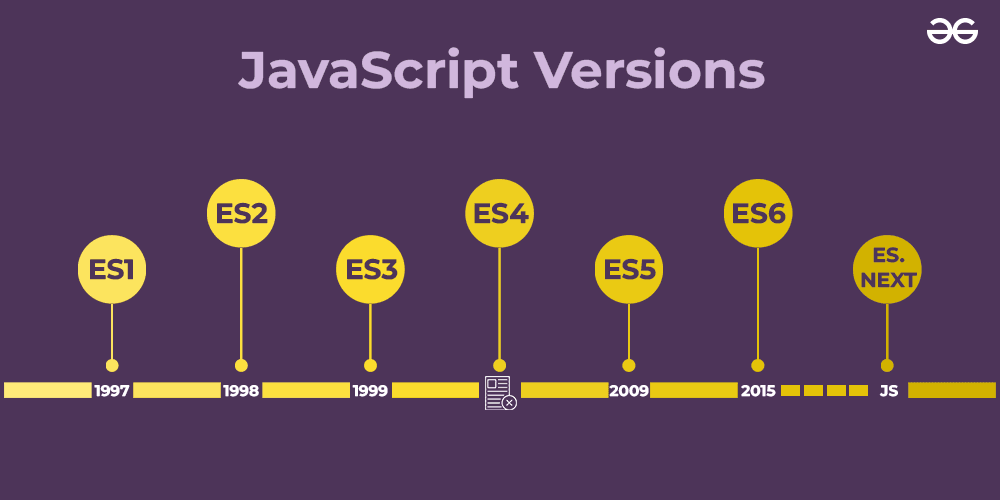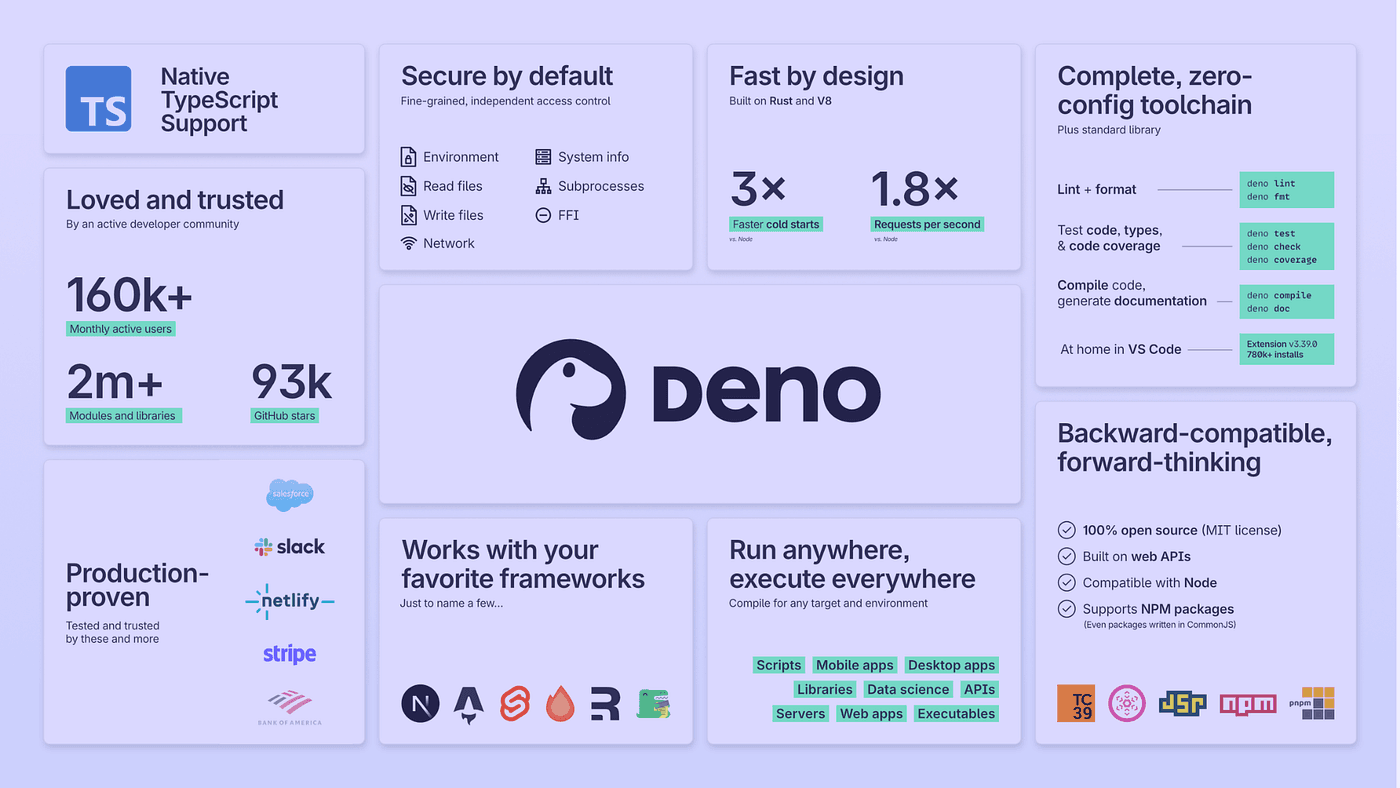JavaScript's Evolution: Deno 2 Takes the Stage
Introduction
JavaScript has been a cornerstone of web development for decades, celebrated for its versatility but often criticized for its quirks. While some developers praise its flexibility, others lament its perceived inconsistencies. This duality has driven innovation within the JavaScript ecosystem, leading to the emergence of various server-side runtimes. Deno 2 is the latest milestone in this journey, revitalizing the Deno runtime with a host of advanced features that promise to redefine how developers approach back-end JavaScript development.

JavaScript Runtimes: A Competitive Landscape
JavaScript’s versatility extends beyond browsers, powering countless server-side applications through runtimes like Node.js, Deno, and Bun. Critics argue that these competing runtimes create unnecessary fragmentation, but competition has historically driven innovation in programming ecosystems. Just as Python benefits from implementations like CPython and PyPy, or C++ thrives with compilers like GCC and Clang, JavaScript developers now have diverse options tailored to different needs.
Node.js, the trailblazer of server-side JavaScript, revolutionized web development by enabling JavaScript to run outside the browser. Deno emerged to address Node.js’s limitations, and more recently, Bun joined the fray, further pushing the boundaries of JavaScript runtimes. Deno 2, however, has raised the bar with its comprehensive approach, blending compatibility, performance, and usability.
The Rise and Features of Deno 2
Native TypeScript and Beyond
Deno was initially lauded for its native TypeScript support, simplifying development by eliminating the need for additional configurations. Deno 2 builds on this foundation, offering unparalleled ease of use for developers working with TypeScript, JavaScript, or both.
Backward Compatibility with Node.js
One of the most significant barriers to Deno’s adoption was its limited compatibility with Node.js and npm. Deno 2 resolves this by achieving full backward compatibility, ensuring that existing Node.js packages work seamlessly. This breakthrough positions Deno as a practical choice for both new and legacy projects.
Enhanced Developer Tools
Deno 2 replaces several widely used tools with built-in functionality:
-
deno lint: A built-in linter that obviates the need for external tools like ESLint.
-
deno format: A formatter that eliminates the dependency on Prettier.
-
Integrated TypeScript: Simply renaming .js files to .ts enables TypeScript, removing friction from the transition process.
Improved Security and Permissions
Deno enforces script permissions for network and file system access, offering a more secure development environment. This feature addresses long-standing security concerns in JavaScript runtimes.
Monorepo and Package Management
Full support for package.json and npm workspaces streamlines dependency management in large-scale projects. Additionally, Deno’s integrated registry, JSr, guarantees native TypeScript support across all packages, reducing dependency-related overhead.
Binary Compilation
For developers seeking the performance and distribution advantages of compiled languages, Deno 2 includes a deno compile feature, converting JavaScript and TypeScript into binaries for macOS, Windows, and Linux.
Interactive Notebooks
Inspired by Python’s Jupyter ecosystem, Deno 2 integrates interactive notebook functionality, empowering developers to execute code and visualize results directly within notebooks.

Advantages and Challenges
Advantages
-
Enhanced Productivity: Built-in tools reduce reliance on third-party packages, simplifying workflows.
-
Backward Compatibility: Full npm and Node.js support lowers the barrier for adoption.
-
Security: Deno’s permission model mitigates risks associated with arbitrary script execution.
-
Native TypeScript: Deno continues to lead in seamless TypeScript integration.
-
Reduced Technical Debt: A robust standard library minimizes the need for additional dependencies.
Challenges
-
Sustainability: As a for-profit initiative, Deno’s longevity may hinge on the success of its hosting solutions.
-
Community Size: While Node.js boasts extensive corporate backing and a larger community, Deno’s ecosystem is still maturing.
-
Competition: Despite Deno 2’s advancements, alternatives like Bun and Node.js remain strong contenders, each with unique advantages.
Practical Applications
Migrating Existing Projects
With full backward compatibility, transitioning a Node.js project to Deno 2 is straightforward. Developers can test compatibility with minimal disruption, leveraging Deno’s enhanced tools for improved workflows.
Optimizing Developer Workflows
Using Deno’s integrated tools like deno lint and deno format can streamline code quality checks, saving time and ensuring consistency.
Adopting TypeScript
For teams hesitant to adopt TypeScript, Deno simplifies the process, allowing for incremental adoption by renaming files and utilizing built-in support.
Interactive Development
Interactive notebooks can revolutionize debugging and data visualization workflows, particularly in data-heavy applications or educational contexts.
Conclusion
Deno 2 marks a pivotal moment in the evolution of JavaScript runtimes, combining innovation with practicality. By addressing past limitations and introducing a host of new features, Deno 2 sets a new standard for back-end JavaScript development. Whether you’re a seasoned developer or new to the ecosystem, Deno 2 offers tools to enhance productivity, security, and scalability.
As the JavaScript ecosystem continues to evolve, Deno 2 reminds us that competition drives progress, ensuring developers have the best tools at their disposal. Dive into Deno 2 today and unlock its potential to revolutionize your development workflow!